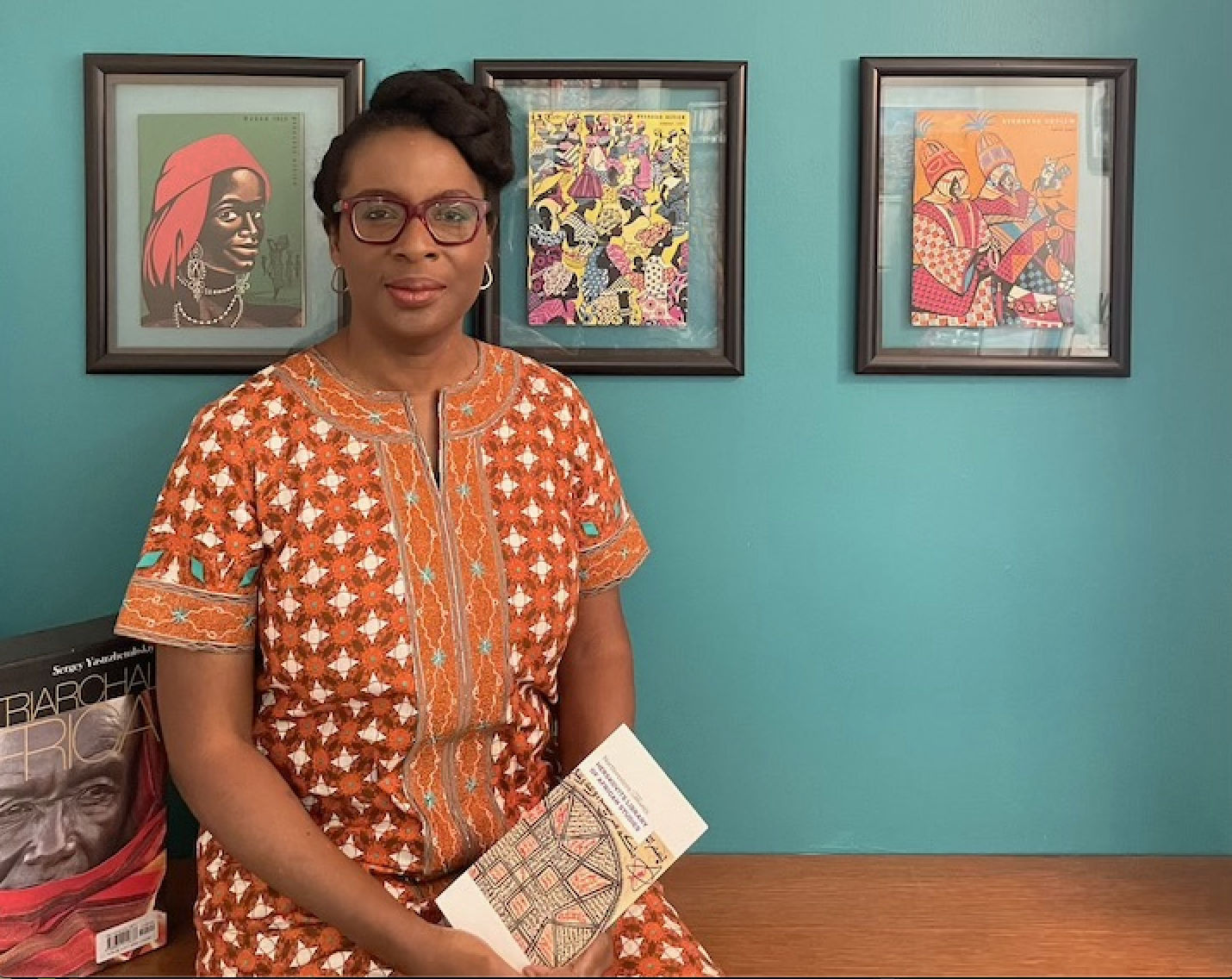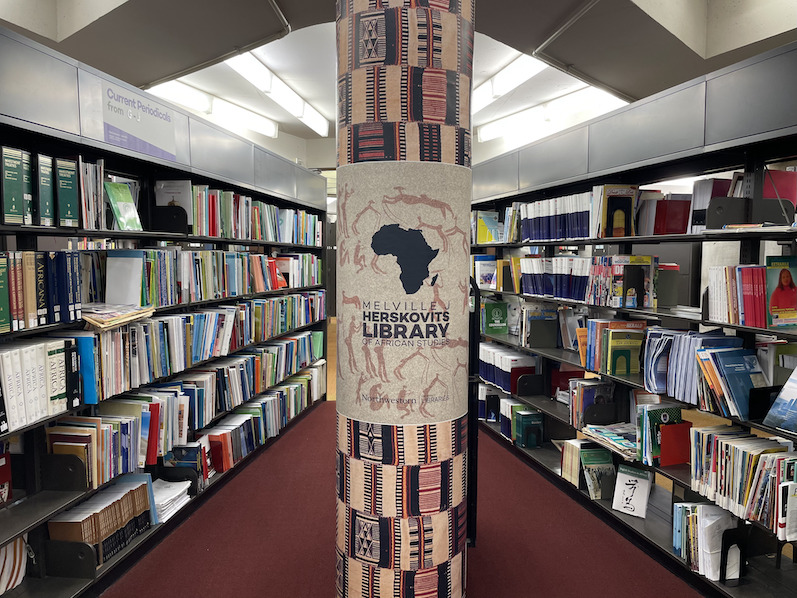Tucked in the fifth floor of University Library, the Melville J. Herskovits Library of African Studies isn’t just a quiet study space. It holds the largest separate Africana Studies collection in the world. While the endless shelves of documents may seem daunting to a first-time visitor, George & Mary LeCron Foster Curator Esmeralda Kale has roamed these aisles for over 18 years.
The Herskovits collection is world famous, Kale said. Since its creation in 1954, the library has accumulated over 400,000 volumes, 250 different newspaper publications and 5,000 posters. However, what keeps scholars coming back to the library is the people behind the collection, such as Kale. The library’s staff is constantly updating the collection, answering questions and contacting librarians beyond Evanston.
Kale and her colleagues’ passion for furthering African Studies continues to support the library and future scholars. Bright Gyamfi, a PhD candidate in History, said that the staff is what truly makes the Herskovits stand out.
“Sometimes even through conversations with them, you get new ideas for research,” said Gyamfi. “That is what makes the Northwestern Africana Department under Esmeralda very inviting. They take the time to get to know you and your project.”
Just a quick peek into Kale’s office will show you how much she cares about her mission. The walls are covered in African art, and behind her sits a large wooden shelf filled with books and certificates from recent conferences. In one corner of the room are stacks of old photo albums of East Africa. On the other side are Cameroonian percussion instruments she’s planning to lend to local elementary schools.

Indeed, Kale’s expertise is remarkable. Originally from Cameroon herself, Kale trained to become an African Studies Librarian at University College London. After graduating, she worked at multiple libraries all across the world, including at the University of Swaziland, Rhodes University, University of Fort Hare and Zayed University. Then, in 2003, she became a bibliographer at the Herskovits library, her dream job. She focused on acquiring items and managing the collections budget. However, when the head curator retired in 2014, Kale knew she had the knowledge to fill her colleague’s shoes.
Flipping through stacks of theses and books, Kale could pick out which photos were from the Herskovits just by looking at them. In conversation, she often brings out artifacts like perfectly preserved African candy wrappers that celebrated President Barack Obama’s election.
The collection contains many more non-traditional archival materials, like a wooden training rifle, Arabic manuscripts from West Africa and even official match balls from the 2010 FIFA World Cup in South Africa. These artifacts are at the library partially due to its funding.
“We’ve always had a generous budget because of Northwestern’s commitment to the subject area,” said Kale. “So even in the face of cuts and budgetary restraints, we are still in a very good position.”
The Herskovits collection isn’t just massive; it contains exclusive, one-of-a-kind materials, meaning some research would be impossible without the library. For example, Gyamfi used the library to find documents about Kwame Nkrumah, Ghana’s first president. These documents were only found at Northwestern because they were burned in Ghana.
“It gives me new evidence to explain what happened in the wake of Nkrumah’s coup,” said Gyamfi.
Northwestern history professor David Lee Schoenbrun also found special documents at the Herskovits including minutes from parliament meetings in Buganda, a powerful kingdom in what is now Uganda.
“Those minutes of those parliamentary sessions allow you to go back to the 1890s and hear … African men debating issues of great importance to them,” Schoenbrun said.
On the off chance someone is looking for something not found in the collection, Kale is more than ready to help. She often helps graduate students find and access other collections, even if the materials are overseas. The library also has written letters to help students get visas to study and conduct research abroad. Even if an item is not in the library, Shoenbrun said, “I can ask them to buy things … and they usually do.”
As a result, the research that stems from the Herskovits library not only sheds light on unknown aspects of African history, but the documents also help reshape narratives surrounding Africa and how we view the continent. “It lets me put African voices at the center of what I write about. I think that’s the most important,” said Shoenbrun. “It’s putting Africans at the center of African history.”

Kale also represents the Herskovits as a member of the Cooperative Africana Materials Project, or CAMP. Along with 46 other institutions such as the Library of Congress and Harvard University, the group works to preserve and digitize materials pertaining to African studies. Recently, the Herskovits worked with CAMP to preserve and digitize around 30,000 documents written by William V. S. Tubman, Liberia’s longest-serving president. The digitized copies are now in the Indiana University archives, but the physical collection was shipped back to Liberia. Projects like these are essential for the global scholar community because they decolonize and decenter knowledge from the West back to Africa, said Gyamfi.
When the library is not assisting current scholars or restoring artifacts from the past, Kale is trying to predict the future. She’s constantly envisioning what subtopics in African studies will become popular among researchers next so she can stock up the library in those areas.
“I’m looking for the trends that exist on the continent of Africa right now, and trying to curate around those trends and collect around those trends,” said Kale. “I’m trying to see what is coming up in … intellectual conversation, what is being published. I’m trying to also connect with faculty … to find out which direction … their research and teaching is going and try and collect around those ideas.”
For example, when she hears about conflict, she immediately researches how these groups are covered by the local media and tries to identify independent newspapers the library can subscribe to so that the collection has a record.
Kale also tries to identify topics that aren’t covered by the collection and ensure there’s enough coverage for people to do research. Recently, she has been looking into Italian presence in Ethiopia.
“I had a rare book dealer come in a couple of weeks ago. He brought a lot of stuff, we looked at it for a couple of days and I made some selections,” she said.
Kale’s enthusiasm to explore the unknown reflects the broader spirit of the Herskovits library. “What keeps me going is curiosity,” she said. “This collection [was founded with] opportunity, foresight … to do something different. To say… ‘I think it is important, the study of these people … let’s see what we can acquire.’ It was a little seed which became something that took hold and then many years later now we have this tree with its roots really deep, and its tentacles and branches all over the place.”